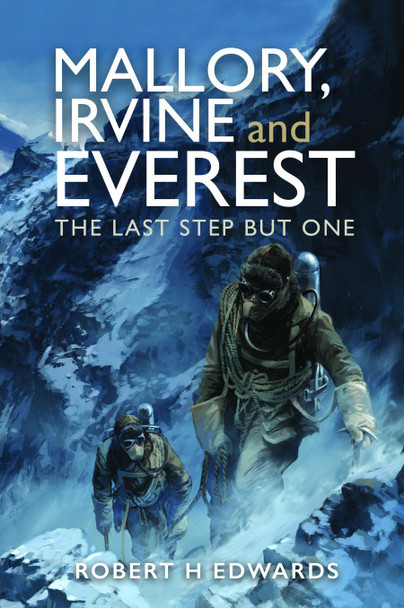Author Guest Post: Robert H Edwards
On October 11, 2024, National Geographic Magazine reported on the most momentous news in the history of George Mallory and Andrew Irvine, since the discovery of Mallory’s body in 1999. Sometime during September 2024, a National Geographic team led by Jimmy Chin found the partial remains of Irvine.
The remains consisted of Irvine’s left boot, substantially intact; his left sock, bearing the label “A. C. Irvine” which establishes its provenance beyond any doubt; and within the boot, a human foot. No other remains or artifacts were reported.
The National Geographic team, with the permission of the Chinese authorities, removed the remains and handed them over the remains to the Tibet-China Mountaineering Association, retaining a tissue sample for DNA analysis.
Where?
Irvine’s remains were resting on a stony moraine on the surface of the Central Rongbuk Glacier. The glacier begins at the foot of the North Face of Mount Everest, and descends westwards and then northwards along the Rongbuk valley. National Geographic understandably has not disclosed the location of the discovery.
A photograph in National Geographic Magazine depicts the left boot, with Jimmy Chin in the background, and behind him, what can be only be the Rongbuk valley, viewed from north to south. In the left of the photograph, apparently only yards from the photographer, we see an icy cliff which must be the western wall of the valley. The location must be close to the western wall.
One hundred years have passed since Mallory and Irvine disappeared on Mount Everest. Like all glaciers, the Central Rongbuk Glacier moves, slowly but perceptibly. In 1924, the remains of Irvine were some distance upstream from the point where they have now been found.
I have found no data on the surface velocity of the Central Rongbuk Glacier. However, I found these data in an article on the East Rongbuk Glacier, which is a tributary of the Central Rongbuk:
“Prior to 2005, ice velocity measurements on ERG [East Rongbuk Glacier] had only been made on two cross sections at 5600 and 5900 m [18,373-19,357 feet] a.s.l. over a 4 month period in summer during the 1959–60 expedition. These observations suggested that ice velocity varied from several metres to tens of metres per year (TSECAS [Tibetan Scientific Expedition of the Chinese Academy of Sciences], 1975).”
(Zhang T, Xiao C, Colgan W, et al. Observed and modelled ice temperature and velocity along the main flowline of East Rongbuk Glacier, Qomolangma (Mount Everest), Himalaya. Journal of Glaciology. 2013;59(215):438-448. doi:10.3189/2013JoG12J202)
If we arbitrarily take 10 metres/year as a working assumption, an object on the surface of the Central Rongbuk Glacier could have moved 1,000 metres downstream from the head of the glacier in 100 years.
The (present) head of the Central Rongbuk Glacier can be seen on Google Earth. Over the last hundred years, most glaciers have melted. At present I do not have data on t=the head of the Central Rongbuk as of 1924. On the basis of a 1,000-meter path from the present head of the glacier, below is my initial estimate as to where the National Geographic team found Irvine’s remains. According to Google Earth, that location is at an altitude of about 20,000 feet.

How?
Irvine’s remains, as discovered, must have reached that location from the head of the Central Rongbuk Glacier. Wherever the head of the glacier was in 1924, it was not on Mallory’s fall line, but several hundred meters to the west.
To my mind, the discovery excludes the possibility that the final falls of Mallory and Irvine were the same event. If at some point they fell together, Mallory at least survived that event, and died following another fall.
I can think of at least two scenarios which are consistent with the new discovery:
• On June 8, 1924, Irvine fell from somewhere on the North Face of Everest to the head of the central Rongbuk Glacier. If so, it seems to me that, given the topography of Mount Everest, the place of that fall had to be to the west of the Norton Couloir.
• On June 8, 1924, Irvine became immobilised or died in the place where on May 24 or 25, 1960, the Chinese mountaineer Wang Fu-zhou would see (and in 1965 would recall seeing) the body of “a European in braces” [for North Americans: suspenders]. At some unknowable date after 1960, natural events carried his body down the mountain to the head of the glacier.
No doubt, other scenarios are conceivable.
What next?
Undoubtedly, the Tibet-China Mountaineering Association will conduct a research expedition to find the rest of Irvine’s body and any artifacts associated with it; or will permit National Geographic to undertake such an endeavour. Irvine’s body and artifacts will surely be found. We may then know more about the last climb of Mallory and Irvine.

Order your copy here.

